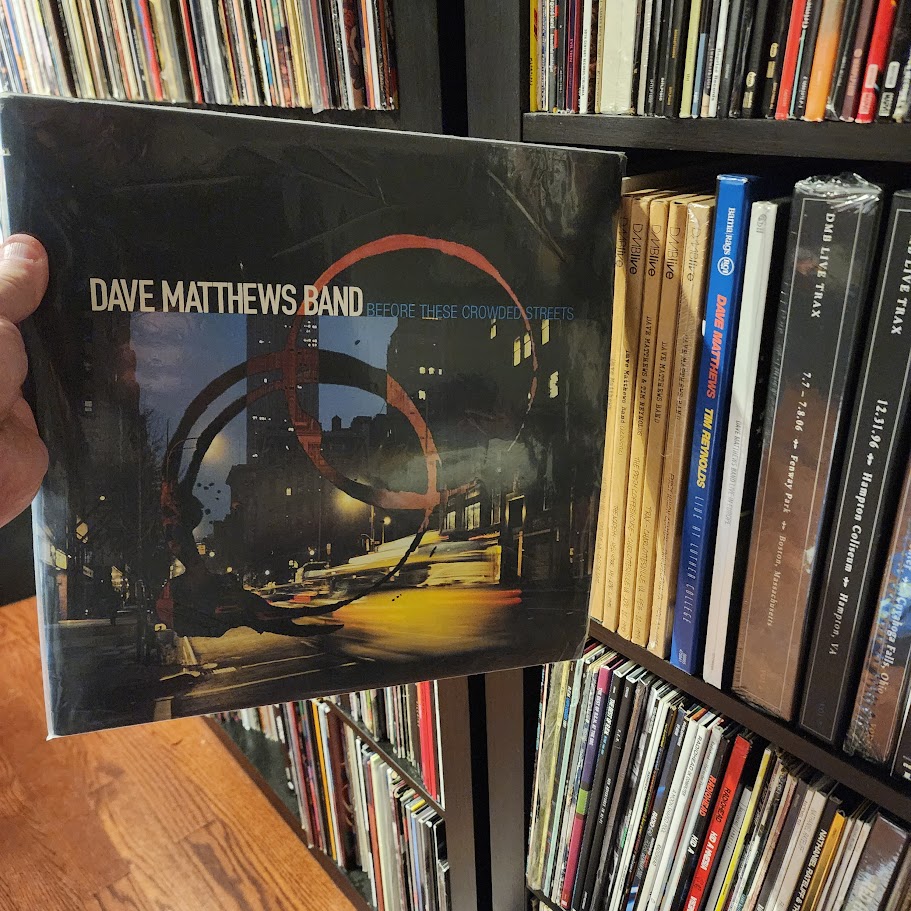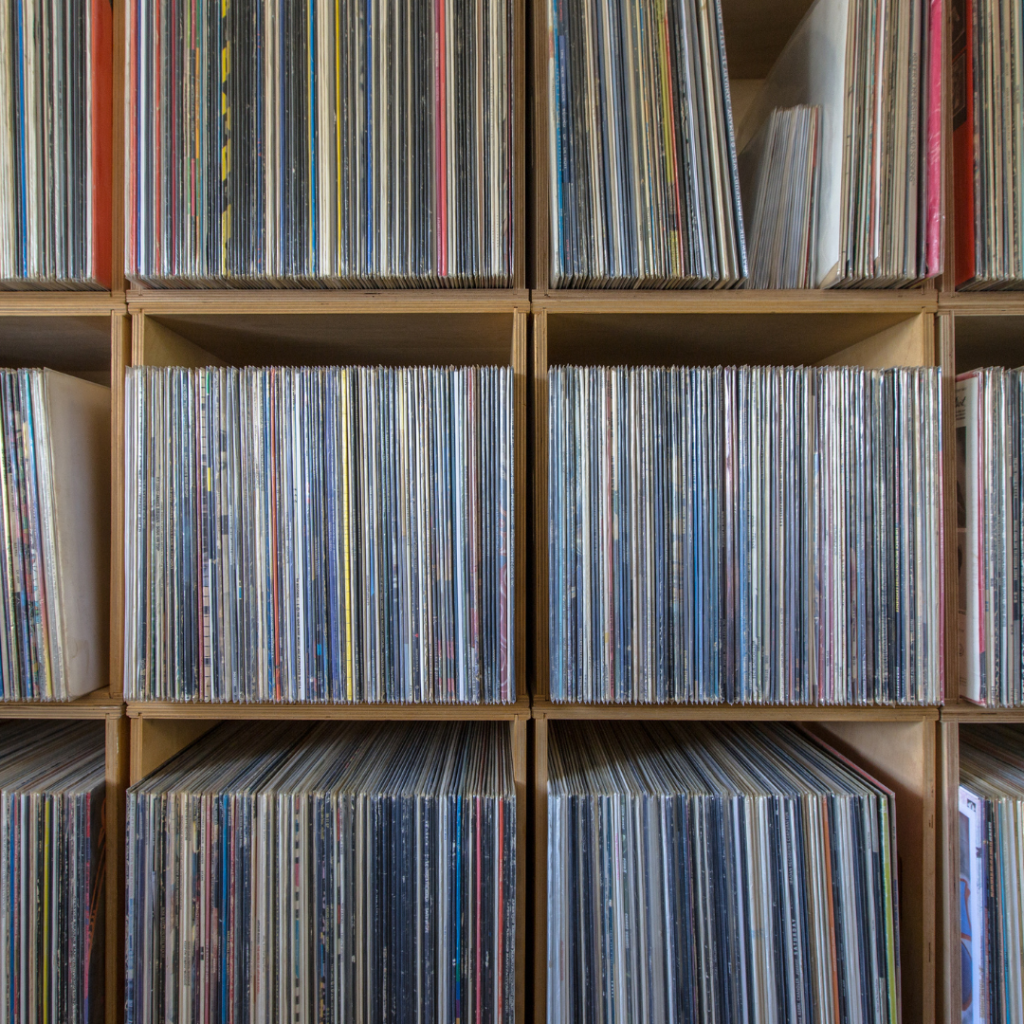Like almost every collection, valuing your vinyl record collection can be tricky. Vinyl records have long been treasured by collectors, and collecting vinyl records is once again popular. At its peak in the 1970s and 1980s, vinyl was the dominant format for music lovers. However, the 1990s and early 2000s saw a significant decline as many retailers shifted focus to selling CDs. The digital music revolution further overshadowed vinyl records, offering more convenient and portable formats. Despite this, a dedicated group of collectors and audiophiles kept the vinyl market alive.
Many records released 20 to 30 years ago have only increased in value. This surge in value highlights the numerous factors involved in valuing your vinyl record collection. From pressing details to rarity and market demand, several variables can influence how much a vinyl record is worth today, making it essential for collectors to understand these dynamics.
This is the third article in our extended ‘Art of Collecting‘ blog series. In partnership with Private Collection Insurance, an insurer that specializes in insurance for collections, we’ve been presenting insights on how to value a collection, whether that is a whiskey and wine, or, like this article, vinyl records. Our next article will focus almost exclusively on how to value sports cards. Our goal is simple: to share our passion for the art of collecting. You can read all our articles by clicking here.
Valuing Your Vinyl Record Collection Today
Today, despite digital streaming services like Spotify or Apple Music, vinyl has made a massive resurgence. Vinyl sales are reaching new highs as both collectors and younger generations rediscover its nostalgic appeal. Many retailers have once again embraced vinyl and even online giant Amazon sells Amazon-exclusive releases. However, that niche community that continued collecting through the 90s and early 2000s have rare finds in their personal collections that have appreciated significantly in value with vinyl’s resurgence in popularity.
When it comes to valuing your vinyl collection, the process involves much more than simply looking at a price guide. If you own classic albums from iconic artists like the Beatles or the Rolling Stones, understanding their value is essential. Rare limited-edition pressings or unique colored variants, like those from Taylor Swift, can significantly increase a record’s worth. Read this article and learn the importance in valuing your vinyl record collection. You will not only gain a deeper appreciation for your collection’s significance but also ensure you’re protecting your investment. Whether you’re a casual collector or a dedicated enthusiast, knowing what makes your records valuable is key to preserving and maximizing the potential of your collection.
There are a few key factors to consider that will influence the value of your vinyl record collection. Just like wine and whiskeyFrom pressing details and condition to market trends and cultural impact, knowing what makes a record valuable will better equip you to make informed decisions.
Key Factors for Valuing Your Vinyl Record Collection
Pressing and Edition

When it comes to vinyl records, not all pressings are created equal. First pressings of iconic albums tend to carry more value, especially if they come from a limited run or were produced before significant reissues or remastering. For example, Dave Matthews Band recently released their iconic Before These Crowded Streets in late 2023 to celebrate the album’s 25th anniversary. A standard black vinyl newer pressing can be purchased for around $50CDN.
Coloured variants, exclusively released by the band on it’s website were even more expensive. And while having a newer pressing is great, originals or ‘OGs’ are far more valuable than the newer, mass-produced copies. In this case, the most recent sale of a near mint (NM) used copy of the original 1998 pressing recently sold on Discogs for $680 on September 21, 2024. A practically unopened OG, complete with hype sticker sold in 2023 for over $1600CDN. We’ll get into Discogs a little later.
Records released in limited numbers or with unique features (such as coloured vinyl, gatefold covers, or additional artwork) can also be more valuable to collectors. A special edition of David Bowie’s The Rise and Fall of Ziggy Stardust on gold vinyl would typically be worth more than the standard black vinyl version.
Many of Taylor Swift’s albums, released with multiple colour variants, have become highly collectible items rather than just music formats. Fans and collectors alike often purchase these coloured vinyl editions not really to play them, but rather, to own a piece of limited-edition merchandise associated with the artist. The multiple variants—each pressed in different colours, sometimes with exclusive artwork—add a sense of exclusivity and fandom pride, turning these albums into keepsakes rather than everyday listening copies.
The Vinyl Market for Colour Variants
Vinyl manufacturers and artists have increasingly capitalized on the popularity of colour variants to engage collectors and boost sales. Unlike traditional black vinyl, colour variants come in a wide array of hues, including marbled, splattered, translucent, or even glow-in-the-dark designs. These records appeal to collectors not only for their aesthetic value but also for their limited-edition nature, making them highly sought after.
Recently more than ever, artists and record labels have embraced this trend as a way to create excitement and exclusivity around album releases. By issuing multiple colour variants for a single album, they encourage fans to purchase more than one copy, especially when the variants are pressed in limited quantities. This strategy has proven highly successful, with many fans seeing these special editions as collectible items that may appreciate in value over time. But is this strategy wasteful? A recent article debates whether Taylor Swift’s latest The Tortured Poets Department strategy of releasing multiple versions is wasteful. It’s an interesting read.
So what’s your take? How much is too much? The answer—who knows?!
From a marketing perspective, colour variants offer a unique selling point, transforming vinyl into not just a medium for music, but also a form of visual art. Manufacturers have responded by refining production techniques to ensure that these pressings maintain high sound quality, even with intricate designs however many audiophiles feel the production quality is lacking. However, it can not be understated that the use of colour variants has revitalized interest in vinyl records, turning them into prized collectibles for both casual listeners and dedicated enthusiasts alike.
Moving along, another factor for valuing your vinyl record collection is the album’s condition.
Condition
Just like any collectible, the condition of a vinyl record plays a huge role in determining its ultimate value. A mint-condition record will always be more valuable than one that’s scratched or worn. So how does an album’s condition affect its grading? Vinyl records are graded based on their condition.
Mint (M) or Near Mint (NM) records are the most valuable. They have little to no visible wear or damage on the album itself. Good (G) or Poor (P) condition records, on the other hand, may be playable but come with noticeable wear, skips, or pops. The condition of the album cover, inner sleeve, and any included inserts or posters also matters. An album with its original artwork, lyric sheets, and promotional material intact like a hype sticker, will be worth more than one without these items. Collectors often look for intact, clean covers free from splits, marks, or water damage.
Valuing Your Vinyl Record Collection – Rarity and Scarcity
The rarity of a vinyl record is also a major factor in determining its value. Records that were produced in small quantities or feature rare recordings can command high prices. Printing errors, either on the sleeve or the album sticker itself also add fuel to the rarity fire.
Furthermore, some albums, especially those produced by small, independent labels or during an artist’s early career, may be pressed in limited numbers. A rare pressing of a debut album from a now-famous artist could be worth far more than a widely distributed release. Even records produced by labels that no longer exist can also have higher value. Albums released on labels like Factory Records, known for its association with Joy Division and New Order, often attract collectors too.
Cultural and Historical Significance as Factors in Valuing Your Vinyl Record Collection
Albums with a strong cultural or historical impact are more likely to attract collectors, adding another layer of value to a vinyl record. An iconic album like Nirvana’s Nevermind marked a major shift in music history, and holds special significance for collectors.
As we’ll explain in our articles on sports cards and memorabilia, signed records or those with original memorabilia, such as limited-edition posters or concert tickets, often add value.
Understanding Market Demand and Trends for Valuing Your Vinyl Record Collection
As with wine or whiskey collections, market trends can significantly influence the value of vinyl records. The resurgence of interest in vinyl over the last decade has driven up prices for both classic and contemporary albums.
Record collecting is an active market, and trends often reflect current cultural shifts or renewed interest in specific artists or genres. Discogs is a popular online database and marketplace that allows collectors to catalogue their own collection. Users can also buy and sell their collection too. The Discogs platform is regarded as one of the most valuable tools for assessing the value of a record collection. Users can search for records by artist, album title, pressing details, and more to find listings of the same or similar items. Each record’s page includes information about its history, condition, and market value, with price ranges based on recent sales data.
Collectors can track the value of their collections using Discogs’ pricing tools, which reflect the most up-to-date market trends. This makes Discogs an essential resource for collectors looking to understand the worth of their vinyl records.
How to Protect and Maximize Your Vinyl Collection’s Value
Proper Storage and Care
One of the most important ways to protect your vinyl records is by storing them properly. Vinyl is sensitive to heat, moisture, and direct sunlight. It’s essential to store your records in a cool, dry space, upright on a shelf. Storing albums horizontally may warp your records over time. Surprisingly, IKEA’s Kallax shelving unit is an ideal choice for storing vinyl records. Each square shelf is 13″ x 13″ and easily holds a 12″ x 12″ record. Finally, keeping records in their inner sleeves avoids scratches while using plastic sleeves protects the vinyl and cover from wear/damage
Insurance for Your Vinyl Collection
If your vinyl collection is large or or includes high-value items, you may want to consider insuring it. Standard homeowner’s insurance policies often have limits on covering collectibles. A standalone policy, offered by Private Collection Insurance, provides coverage specifically for your collection. PCI protects what you collect, and will help ensure full protection for your valuable collection.
But before insuring your collection, ensure you have accurate appraisals and detailed documentation. Using the Discogs app will help keep track of pressing details, condition, and current market value of each record.
Valuing Your Vinyl Record Collection
Valuing your vinyl record collection requires knowledge of the pressing, condition, rarity, and market demand for each album. Use this knowledge to better protect your collection and maximize its value, whether for sale, insurance, or personal enjoyment.
As collectors, we understand that the true value of a collection is not just in the financial aspect. A collection is in the joy, history, and memories that each record brings. Take the time to properly care for and value your vinyl records. You’ll ensure that your collection continues to bring happiness and, if desired, a healthy return on investment.
Over the coming weeks, we’ll continue this series on collecting. We’ll explore the nuances of valuing and protecting your collections. From sports cards to rare bottles of whiskey, we’ll explore what it means to truly appreciate and protect the art of collecting.
We’d love to hear about your collections on Facebook and Instagram. If you are not already following us on those platforms, please consider a like and a follow. Let’s continue the conversation and share in the joys of collecting, together!


